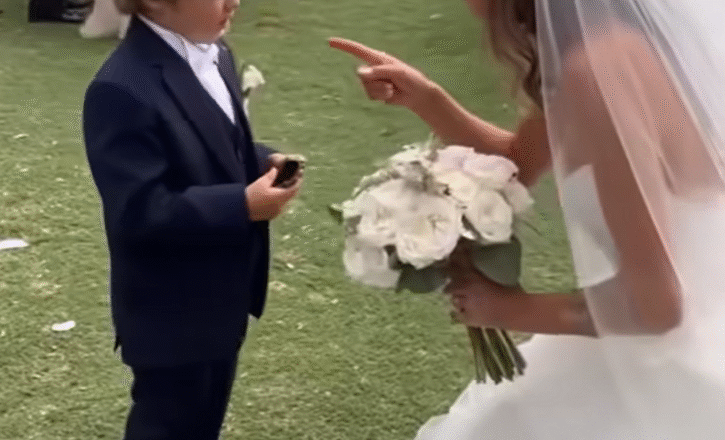Wendy had made it clear from the very beginning that my grandson Alex wasn’t welcome—not at her wedding, not in her home, not in her life. My son Matthew seemed to go along with her rules, blinded by love or perhaps by fear of losing her, but I couldn’t. Alex was just five years old, a sweet boy who had already lost his mother and was living with me ever since.
He was my joy, my responsibility, and most of all, Matthew’s son. Yet when I asked Wendy about including him in the wedding, she didn’t even blink as she gave me that cold little smile and said, “It’s not a kid-friendly event. He’s Matthew’s son, not mine.” The words cut deep. On the wedding day, I dressed Alex in a small gray suit, his hair combed neatly, his eyes shining with the innocent excitement of being part of a celebration he didn’t even know he was being excluded from. At the venue, Wendy spotted us and hissed, “He’s not supposed to be here,” but I only smiled because she didn’t know that I had already taken measures to make sure Alex would never be erased. I had hired a second photographer, someone whose sole purpose was to capture everything that happened between Matthew and his son, every tender moment, every smile, every glance, and even the moments when Wendy’s mask slipped and her cruelty showed.
After the ceremony, Alex, unaware of the tension around him, tried to step into a group photo. With venom dripping from her voice, Wendy snapped in front of everyone, “He’s not my child! I don’t want him in any photos.” The guests fell into stunned silence, their faces pale with shock, while Matthew froze, torn between his wife and his child. That moment was seared into all of us. Later that evening, during the reception, I lifted my glass to give a toast. My words were sharp and deliberate: “To Wendy—may she learn that families aren’t edited like photo albums. They come with history, love, and children who deserve to belong.” The silence that followed was suffocating, heavy with judgment and discomfort, and then came the most heartbreaking sight of all: Alex tugged at Wendy’s dress with his tiny hand and offered her a handful of flowers he had picked. She took them like garbage, her face twisted in disdain, unaware that the camera had captured it all—the innocence of a child reaching out and the coldness of a woman rejecting him. Days later, I handed Matthew the album the second photographer had put together. It was a painful record of the truth Wendy had tried to hide: Matthew holding his son’s hand, Alex’s radiant smile, Wendy’s cutting glares, and that awful moment when she pushed him away from the photos as if he didn’t belong. By the time Matthew finished looking through it, his face was ashen. His voice trembled as he whispered, “She hates my son. I can’t be with someone who doesn’t love him.” Within a month, the marriage was over. There was no fight left in Matthew, no excuses to make—he had seen the truth laid bare. Wendy vanished from our lives as quickly as she had entered, and Alex never once asked where she had gone. What mattered to him was something else entirely. When Matthew finally moved into a small house of his own, with scuffed wooden floors and walls that echoed with possibility, Alex looked around wide-eyed and asked, “Daddy, does this mean I can come over now?” Matthew dropped to his knees, pulled his boy close, and said, “No, buddy. It means we live together now.” And just like that, the weight of sorrow lifted, replaced by laughter that spilled through every room, filling that little house with a kind of love no wedding album could ever capture—real, unconditional, and forever.
